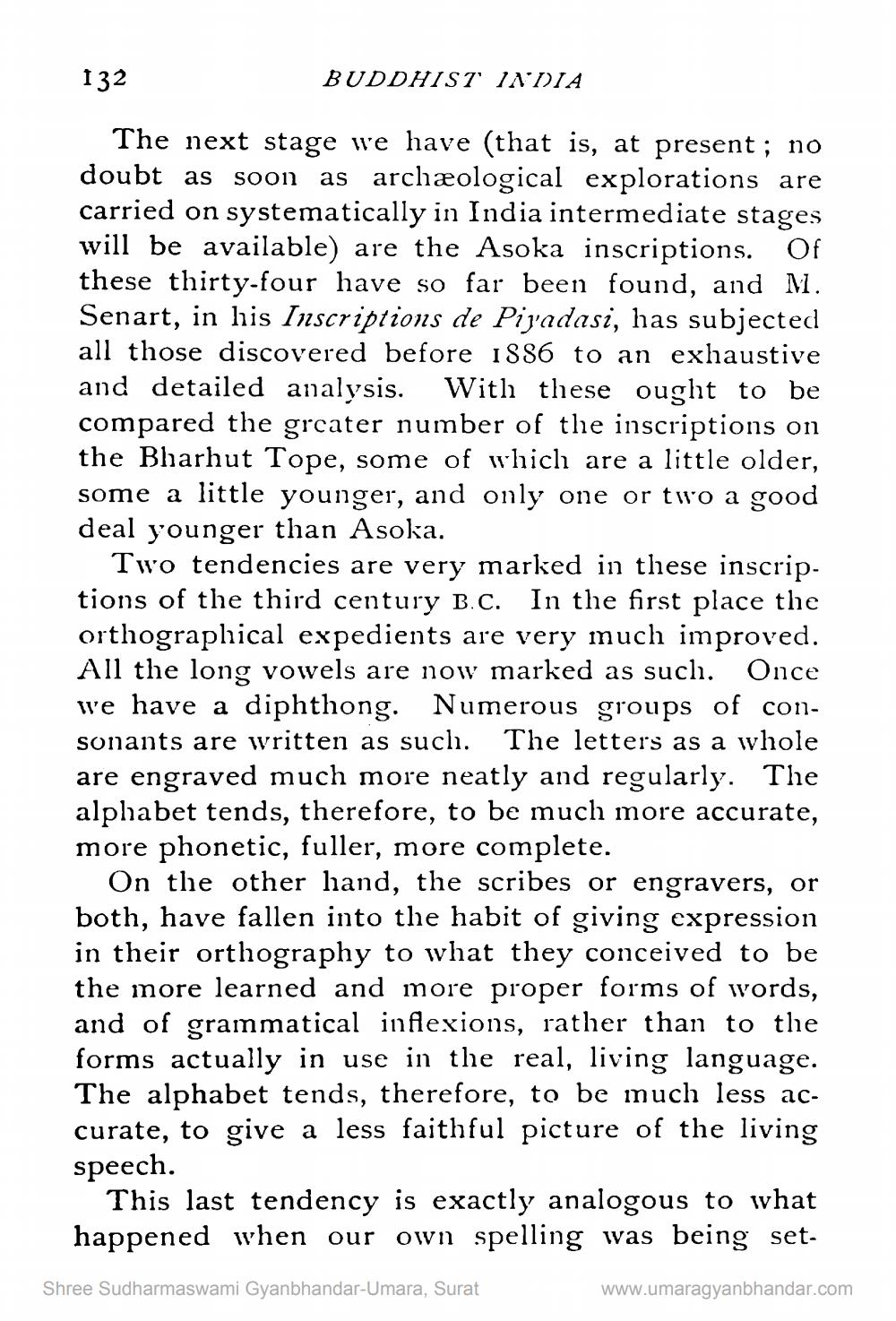________________
132
The next stage we have (that is, at present; no doubt as soon as archæological explorations are carried on systematically in India intermediate stages will be available) are the Asoka inscriptions. Of these thirty-four have so far been found, and M. Senart, in his Inscriptions de Piyadasi, has subjected all those discovered before 1886 to an exhaustive and detailed analysis. With these ought to be compared the greater number of the inscriptions on the Bharhut Tope, some of which are a little older, some a little younger, and only one or two a good deal younger than Asoka.
BUDDHIST INDIA
Two tendencies are very marked in these inscriptions of the third century B.C. In the first place the orthographical expedients are very much improved. All the long vowels are now marked as such. Once we have a diphthong. Numerous groups of consonants are written as such. The letters as a whole are engraved much more neatly and regularly. The alphabet tends, therefore, to be much more accurate, more phonetic, fuller, more complete.
On the other hand, the scribes or engravers, or both, have fallen into the habit of giving expression in their orthography to what they conceived to be the more learned and more proper forms of words, and of grammatical inflexions, rather than to the forms actually in use in the real, living language. The alphabet tends, therefore, to be much less accurate, to give a less faithful picture of the living speech.
This last tendency is exactly analogous to what happened when our own spelling was being set
Shree Sudharmaswami Gyanbhandar-Umara, Surat
www.umaragyanbhandar.com




